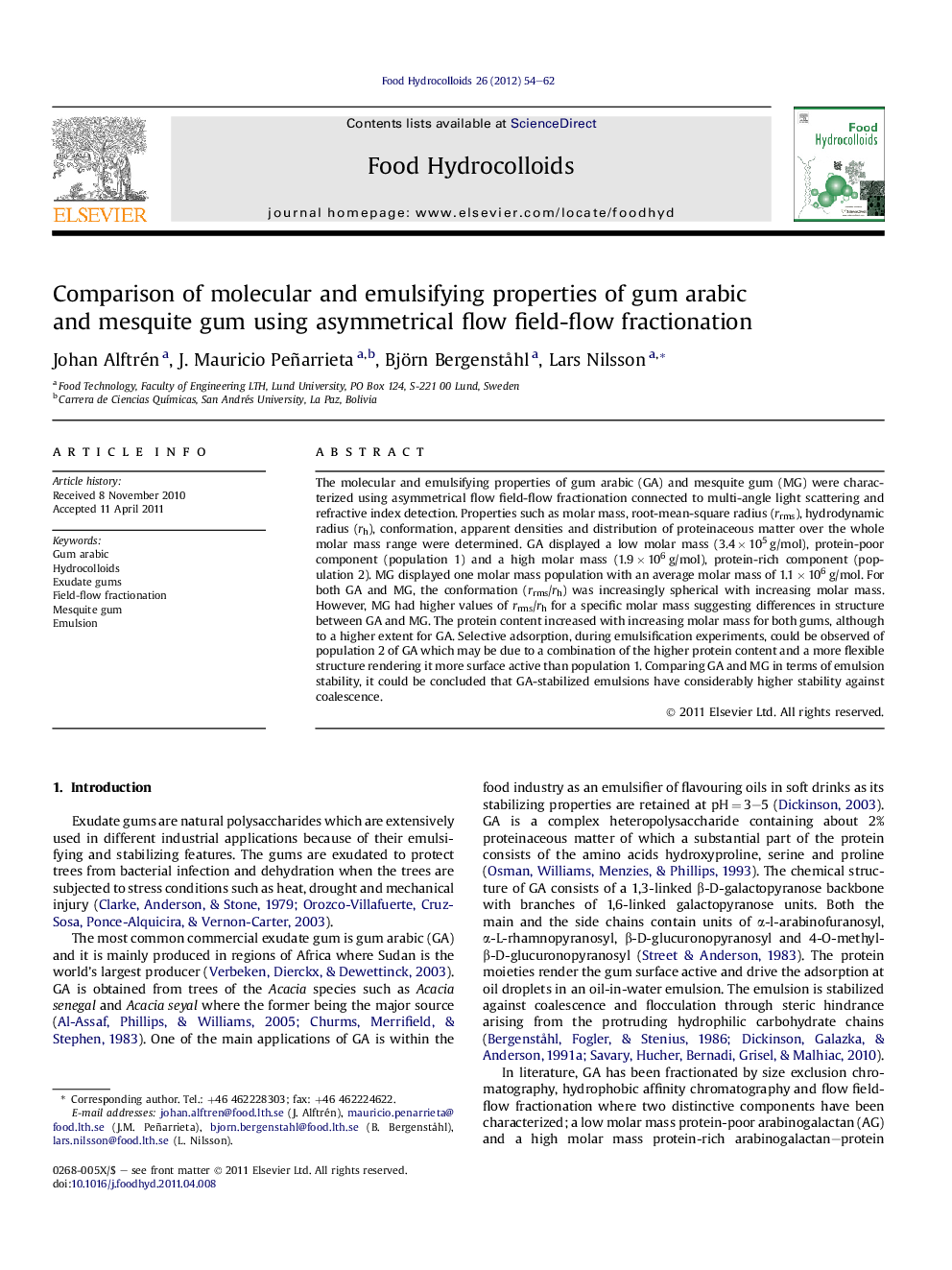| Article ID | Journal | Published Year | Pages | File Type |
|---|---|---|---|---|
| 604980 | Food Hydrocolloids | 2012 | 9 Pages |
The molecular and emulsifying properties of gum arabic (GA) and mesquite gum (MG) were characterized using asymmetrical flow field-flow fractionation connected to multi-angle light scattering and refractive index detection. Properties such as molar mass, root-mean-square radius (rrms), hydrodynamic radius (rh), conformation, apparent densities and distribution of proteinaceous matter over the whole molar mass range were determined. GA displayed a low molar mass (3.4 × 105 g/mol), protein-poor component (population 1) and a high molar mass (1.9 × 106 g/mol), protein-rich component (population 2). MG displayed one molar mass population with an average molar mass of 1.1 × 106 g/mol. For both GA and MG, the conformation (rrms/rh) was increasingly spherical with increasing molar mass. However, MG had higher values of rrms/rh for a specific molar mass suggesting differences in structure between GA and MG. The protein content increased with increasing molar mass for both gums, although to a higher extent for GA. Selective adsorption, during emulsification experiments, could be observed of population 2 of GA which may be due to a combination of the higher protein content and a more flexible structure rendering it more surface active than population 1. Comparing GA and MG in terms of emulsion stability, it could be concluded that GA-stabilized emulsions have considerably higher stability against coalescence.
Graphical abstractFigure optionsDownload full-size imageDownload as PowerPoint slide
